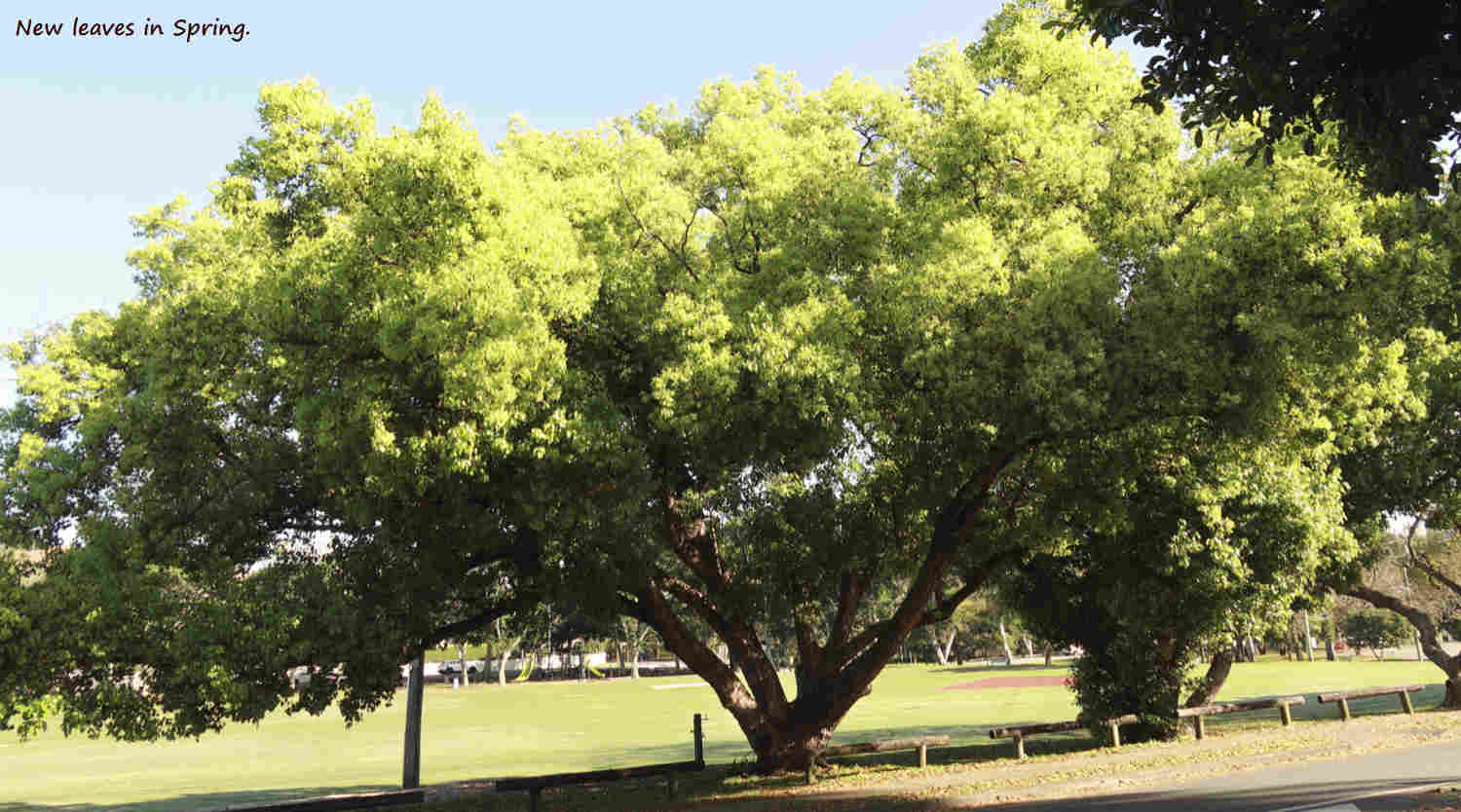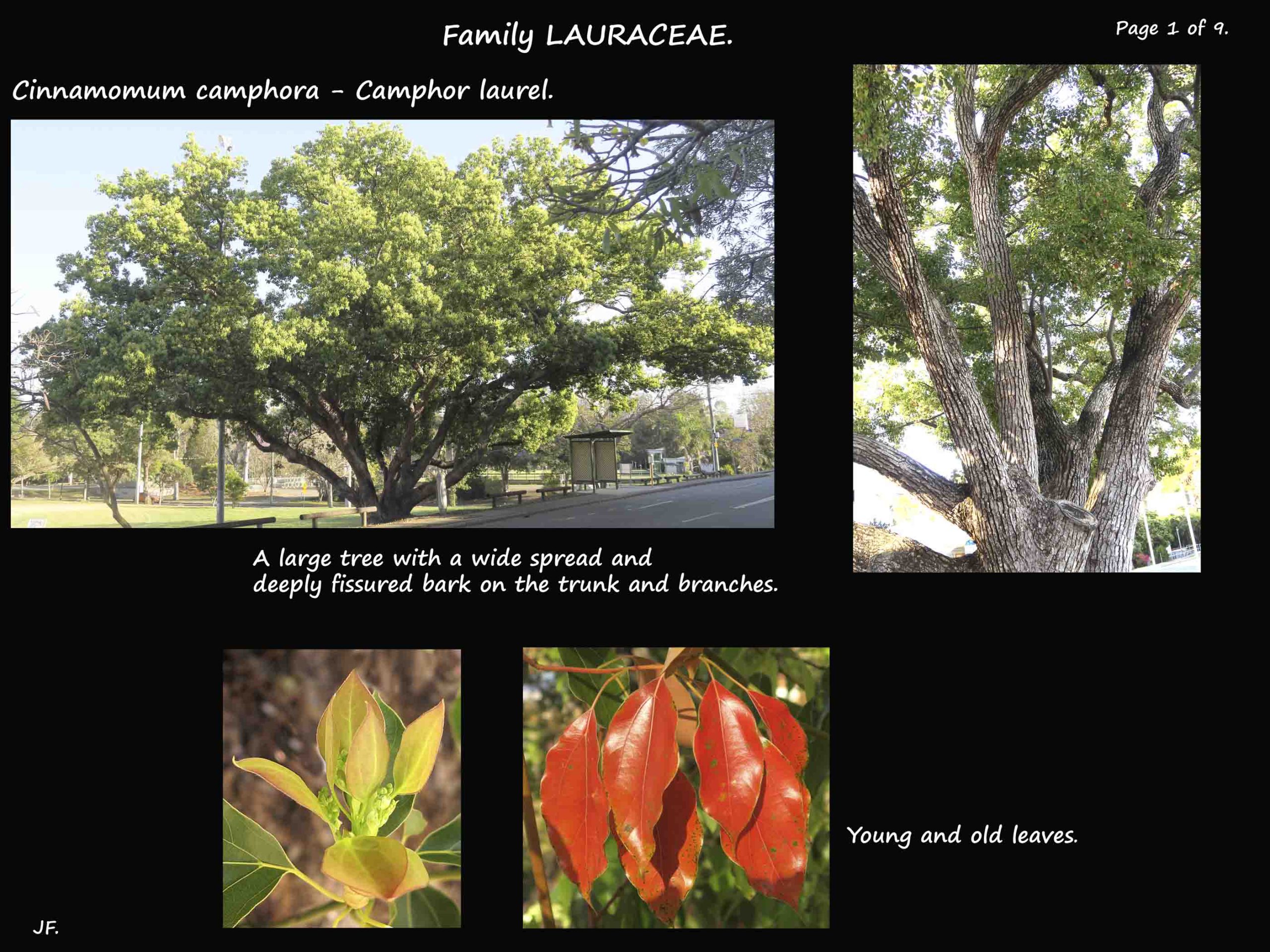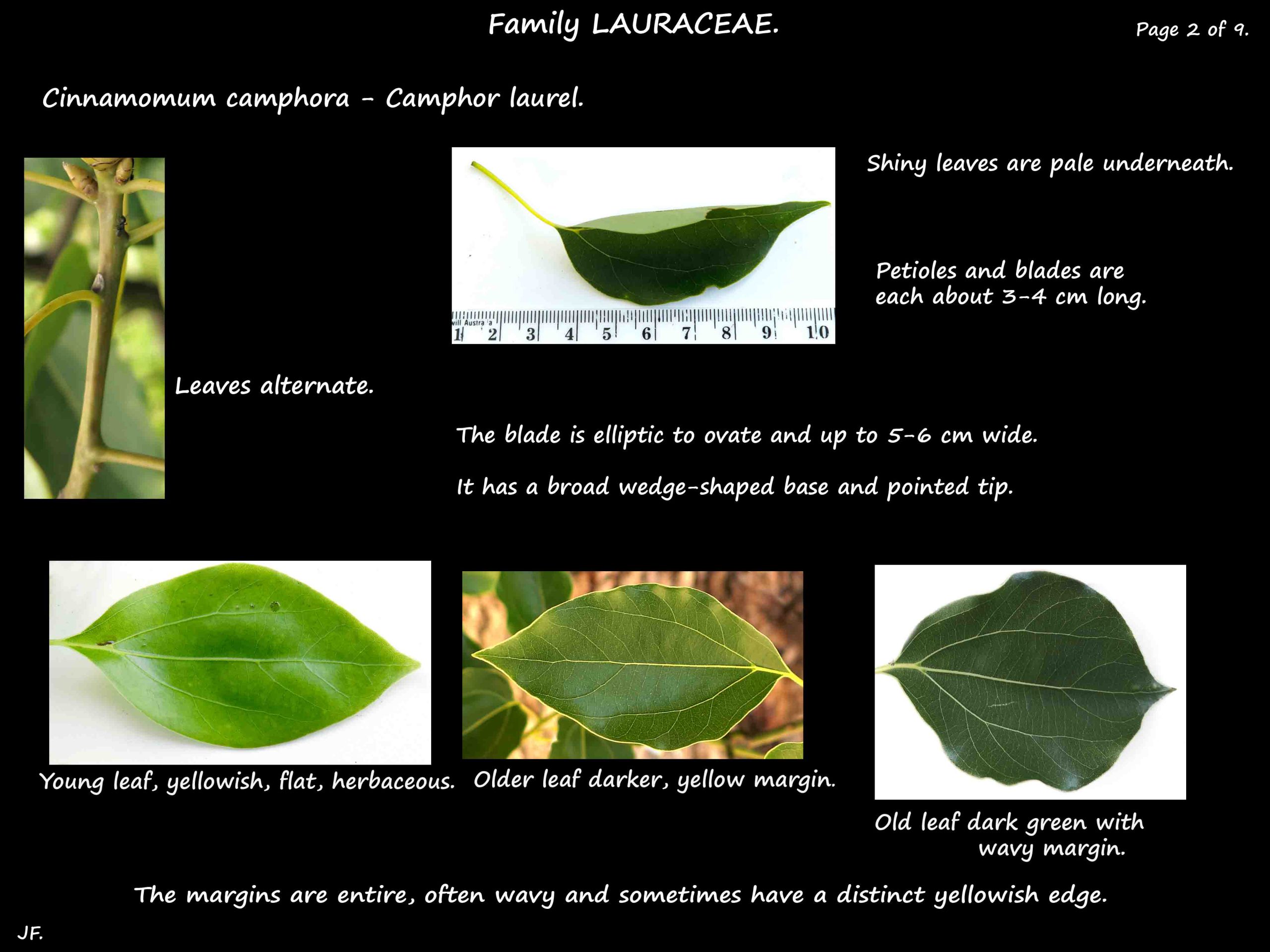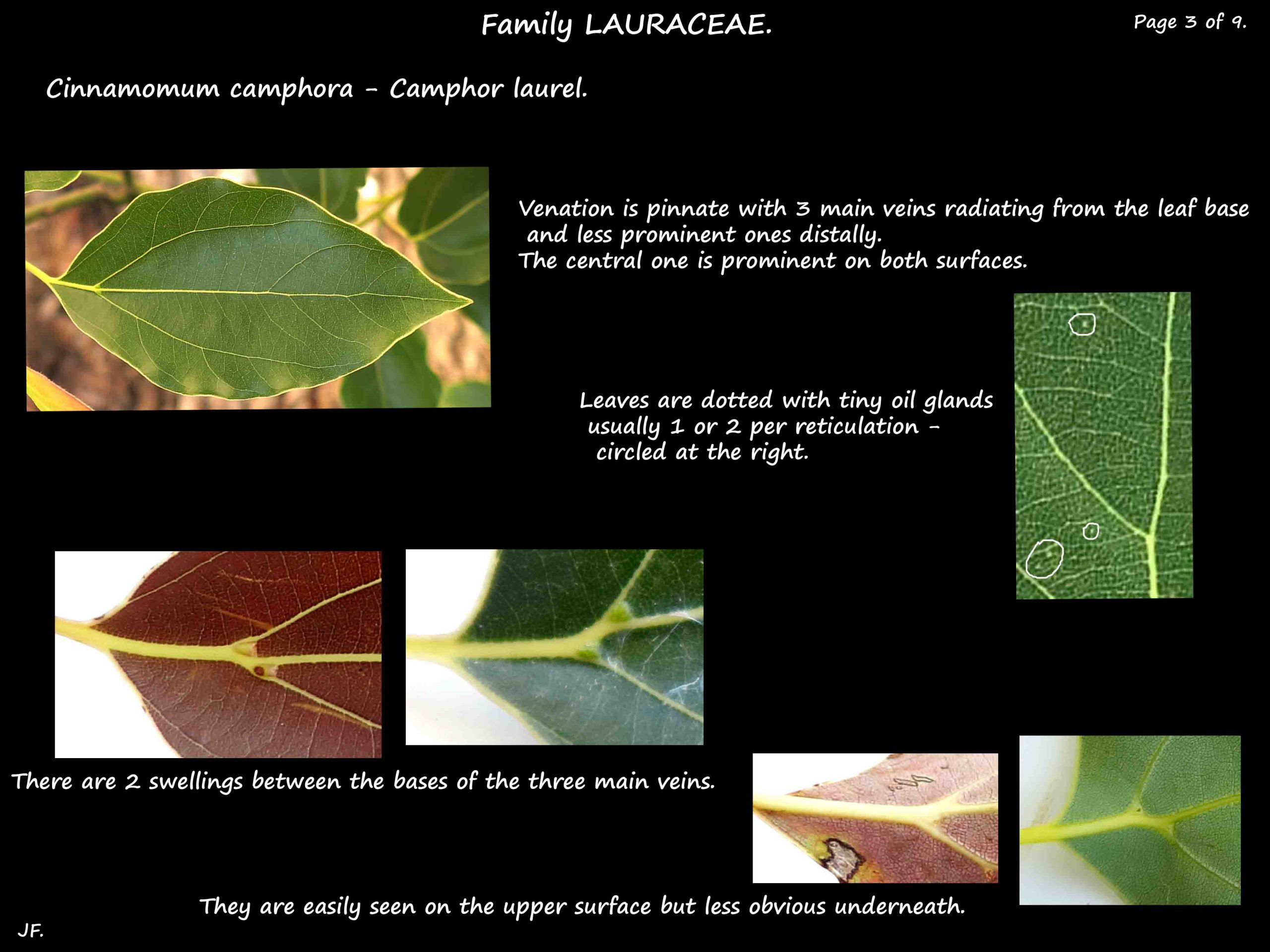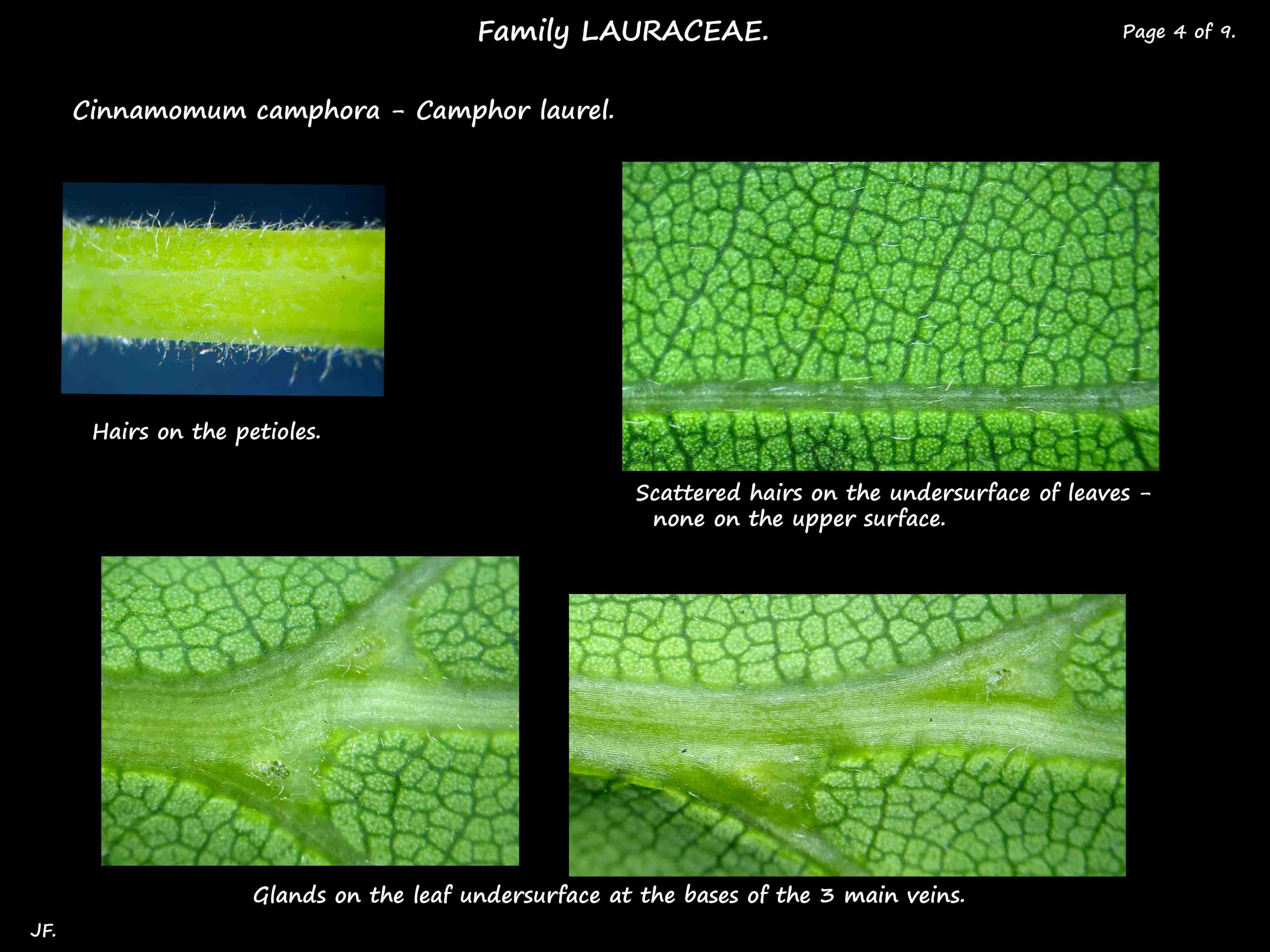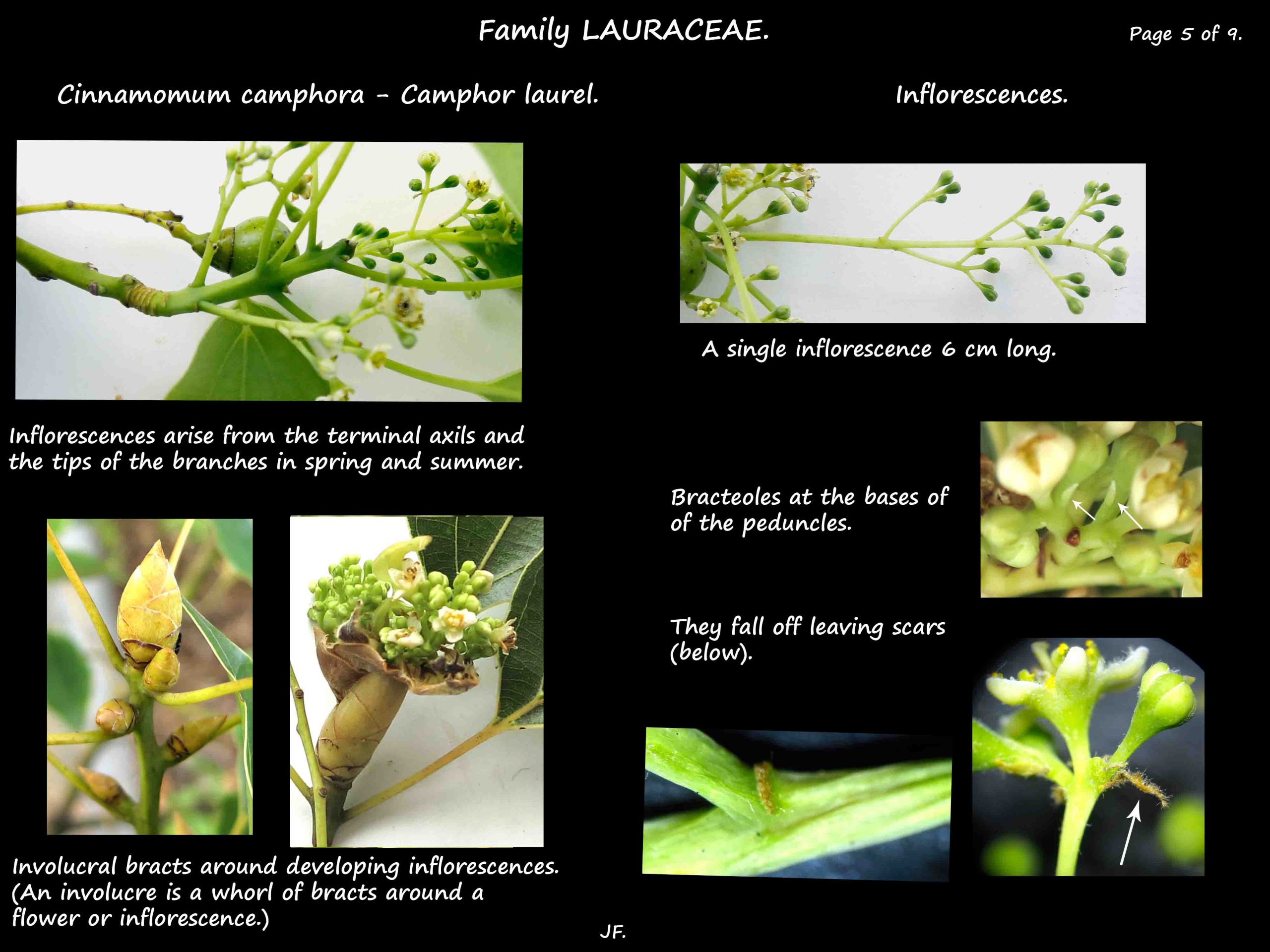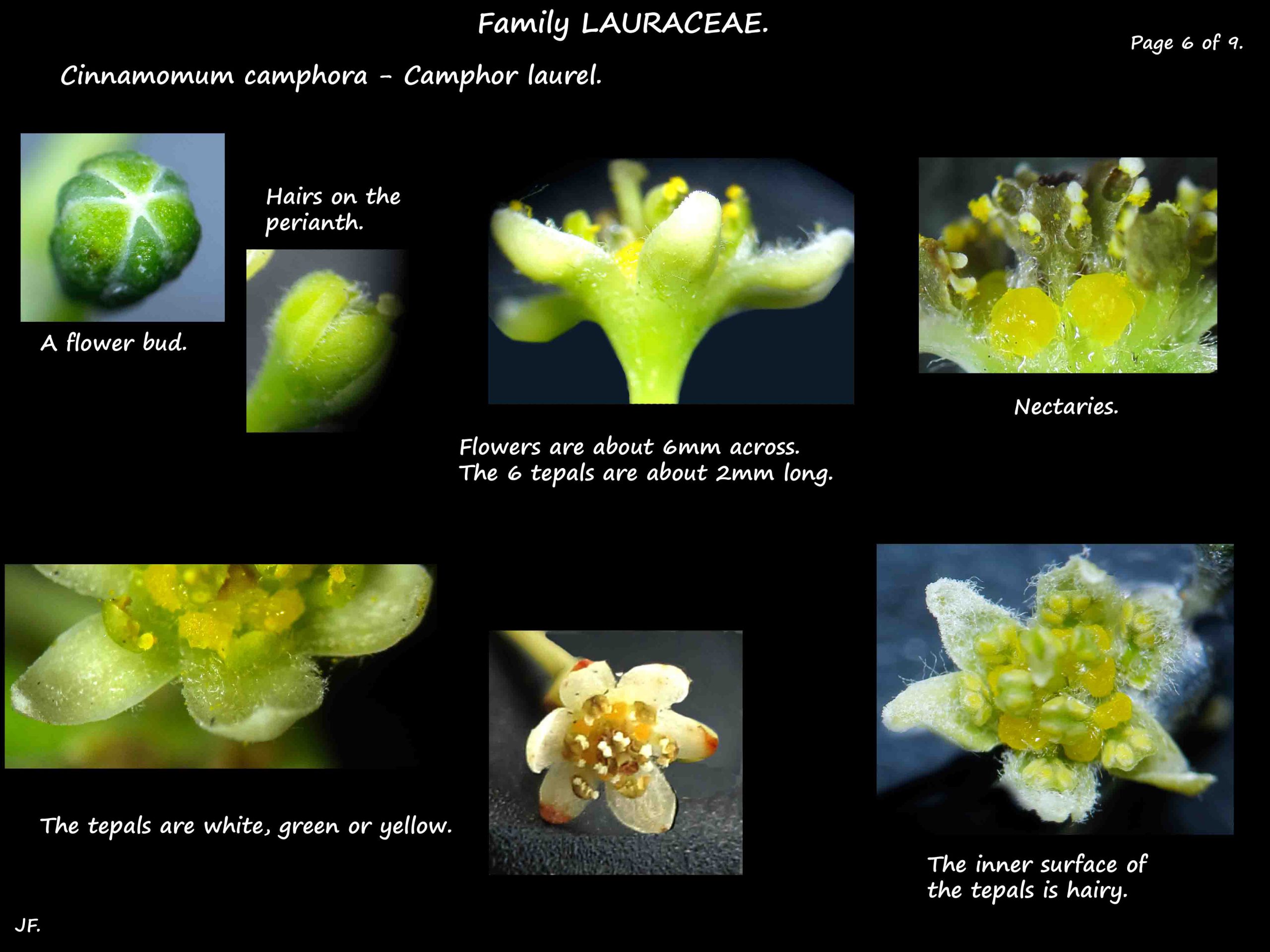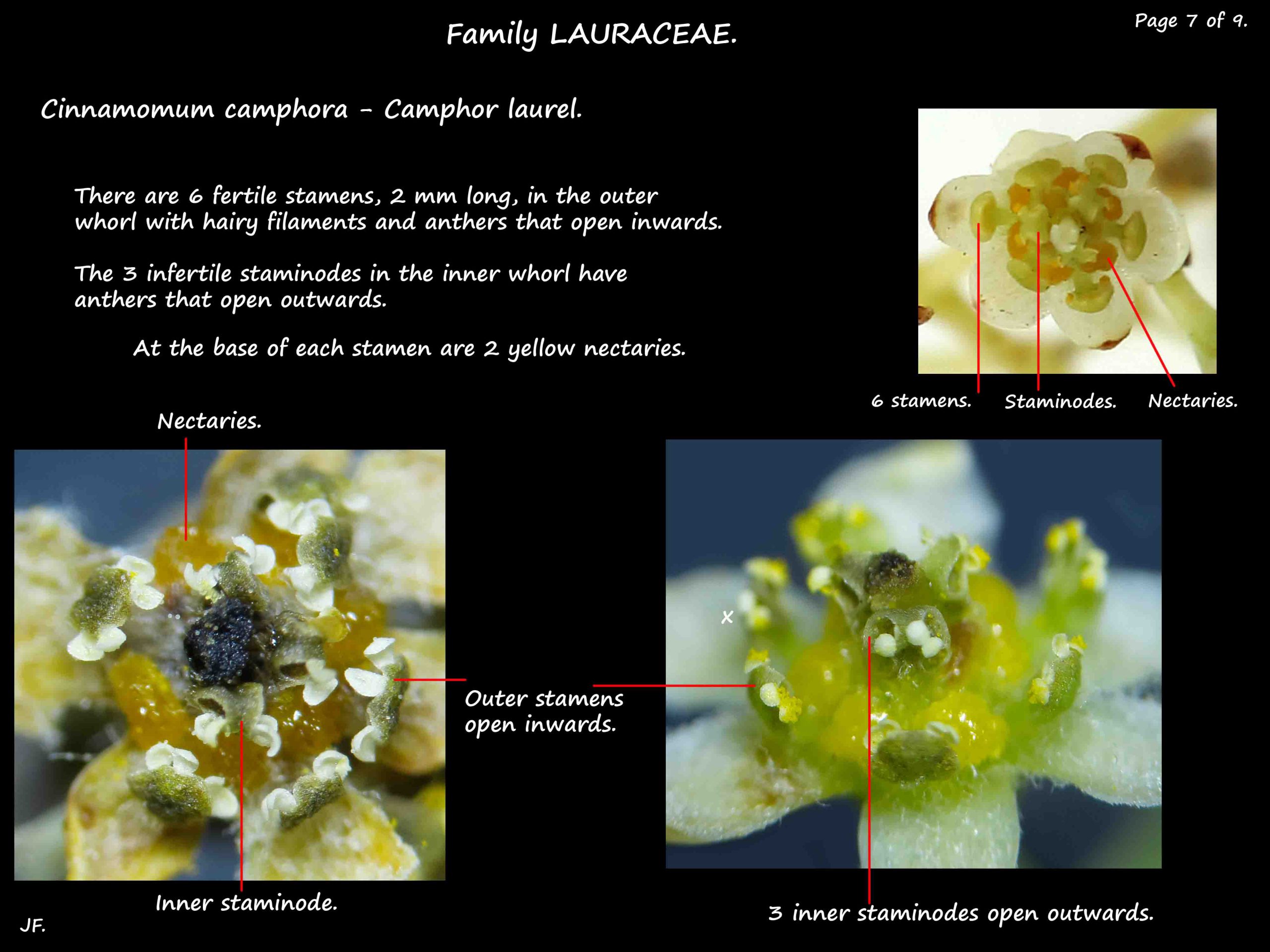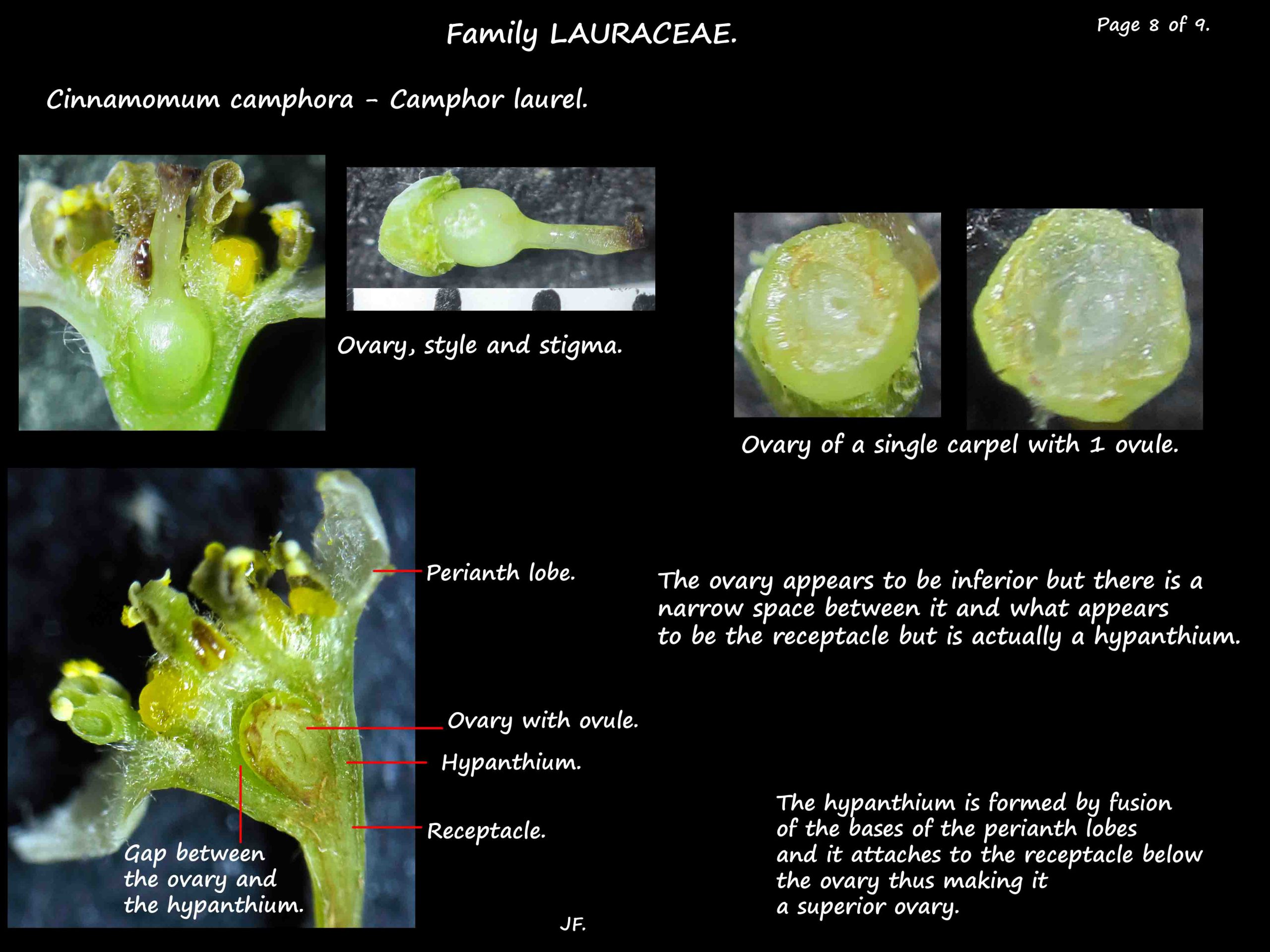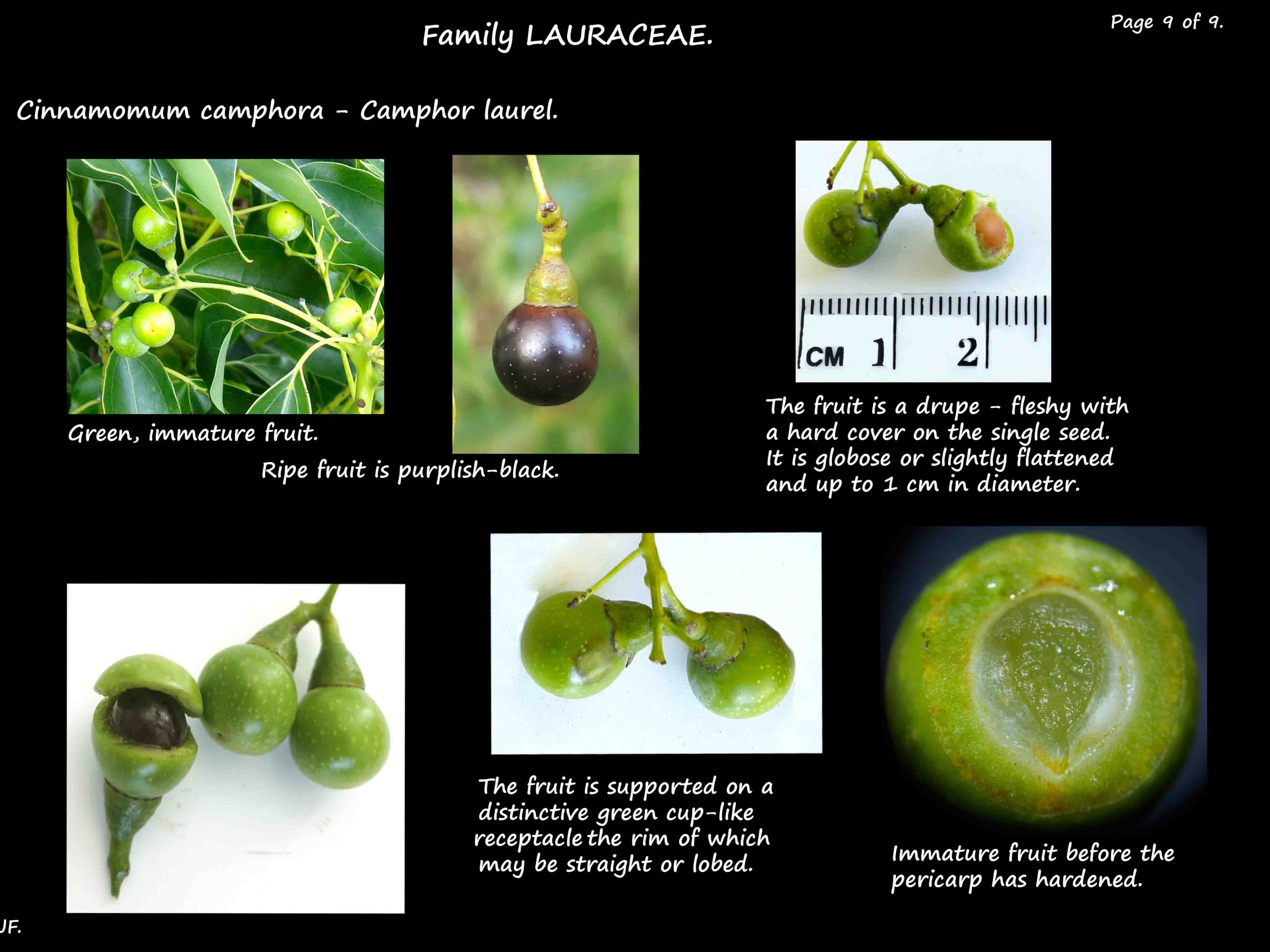Cinnamomum camphora.
Camphor laurel trees are naturalised in Australia and common in Queensland and New South Wales.
They are sometimes regarded as weeds because of their rapid growth.
A tall, spreading evergreen tree up to 30 m high with a wide crown.
The longitudinally fissured bark is a light greyish-brown.
Young branches may be reddish-green.
Leaves and bark have a strong camphor smell when damaged.
The young leaf buds are covered by overlapping scales.
Leaves are alternate but may be so close they appear to be in whorls.
The hairy petioles are 3-4 cm long and the blades are 5 to 10 cm long.
The leathery leaf blade is elliptic to ovate with a broad base and pointed tip.
The hairless upper surface is a shiny green and the duller lower surface has scattered hairs.
The leaf margins are often wavy and adult ones can have a yellow margin.
The midrib and 2 side veins are prominent and there are swellings at the junction of the side veins with the midrib.
There are small oil glands.
Masses of flowers appear in the terminal leaf axils.
Flowers, 6 mm across, are on a long stalk with bracteoles (small leaf-like structures) at the base.
The 6 perianth segments (tepals or sepals) in 2 whorls, are pale yellow to greenish-white.
They are inserted on a hypantheum (the fused bases of the tepals and stamens).
The tepals are only 2 to 3 mm long, densely hairy inside and smooth or with a few hairs outside.
The stamens are in 2 whorls.
There are 6 fertile stamens 2 mm long in the outer whorl.
These have hairs on the filaments and the anthers are basifixed.
The inner whorl has 3 staminodes.
The anthers of the outer stamens open inwards and those of the staminodes open outwards.
There are 2 nectar glands at the base of the filaments.
The single ovary, about 1 mm long with a similar length style, has 1 ovule.
The fruit is a drupe – a single seed with a hard covering inside a fleshy layer.
They are up to 10 mm across, ovoid or a flattened sphere and ripen from green (with white spots) to a purplish black.
They are attached to the stem by a greenish cup-like receptacle the rim of which may be straight or lobed.
J.F.
